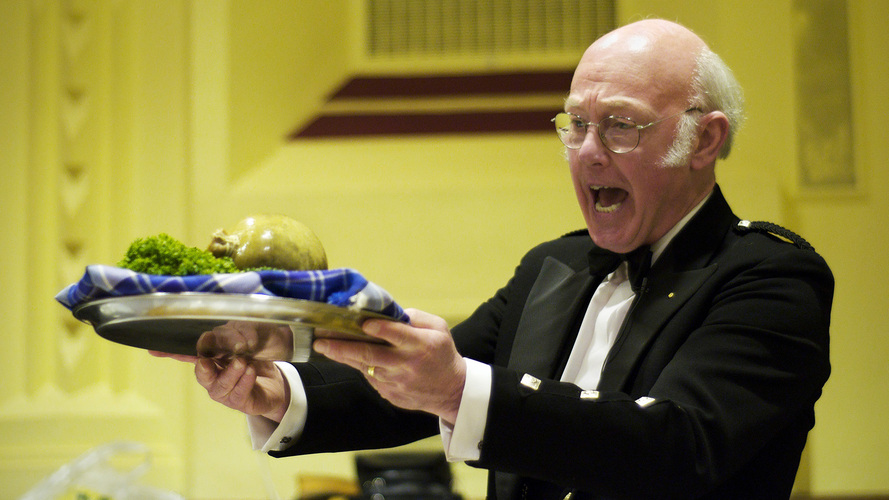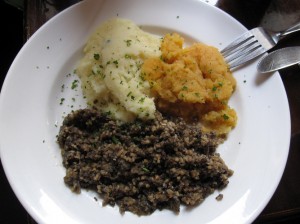
Post by Lydia Zuraw, The Salt at NPR Food (1/25/13)
Don't fear the haggis. Just think of it as a big, round sausage. That's what it is anyway.
Haggis is Scotland's national dish and every year on (or near) Jan. 25, it plays the starring role in Burns Suppers held around the world in celebration of the Scottish poet Robert Burns on his birthday.
Technically, it's the heart, liver and lungs of a sheep mixed with suet, oatmeal and seasoning and boiled in a bag. Yes, said bag was traditionally the sheep's stomach, but modern haggises are frequently prepared in sausage casing. It's much tastier than you might think. As one Scottish friend puts it, haggis is "a dish that makes the worst-sounding combination of meat taste fantastic."
It's central to the Burns Supper, paraded into the room on a silver platter and accompanied by bagpipes. Before cutting and serving haggis, a designated guest first addresses it, reciting Burns' poem of appreciation for the "Great chieftain o' the pudding-race." In a mock heroic style, the verse describes the haggis as worthy of grace and a glorious sight, tasting better than a French ragout or fricassee, and that "if ye wish her gratfu' prayer, Gie her a Haggis!"

With his "Address to a Haggis," Burns elevated the worth of a peasant food. "Haggis was really a meal of the working man – the people who didn't have much – because when a sheep was killed, they would cut it up and use everything," says Tony Grogan, president of the Robert Burns Association of North America and a Scottish ex-pat.